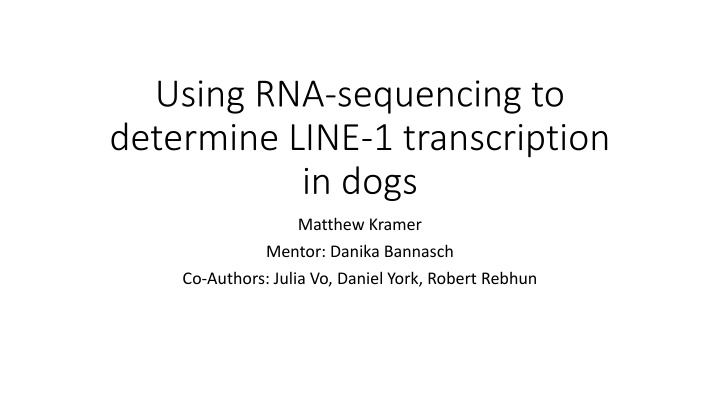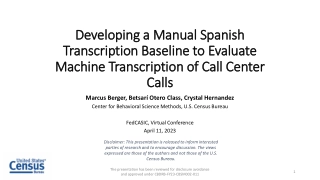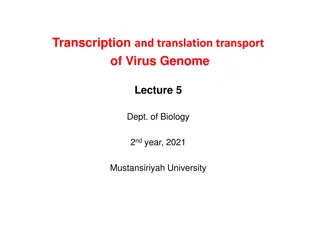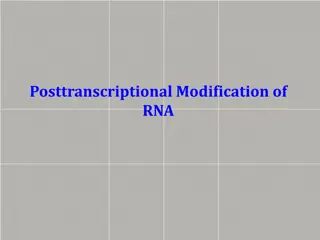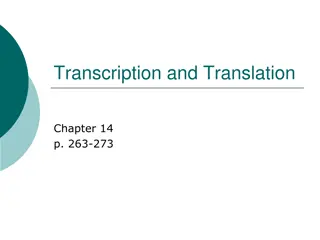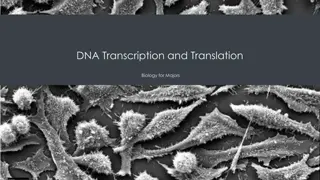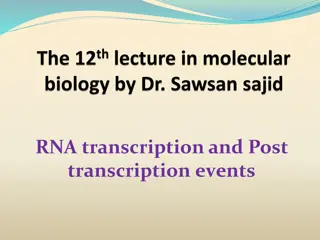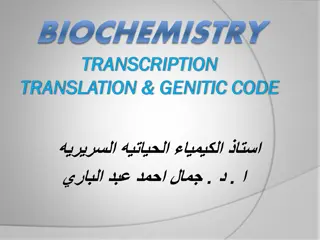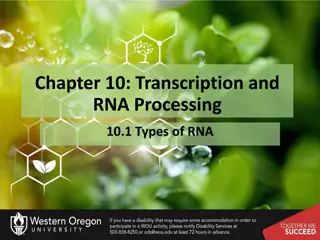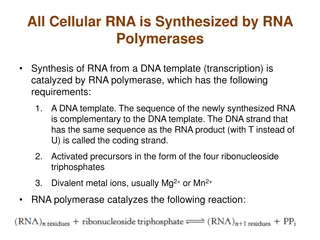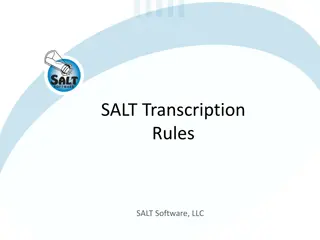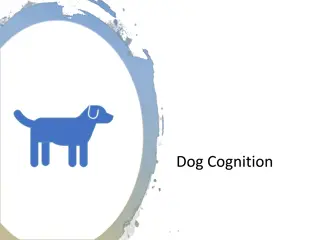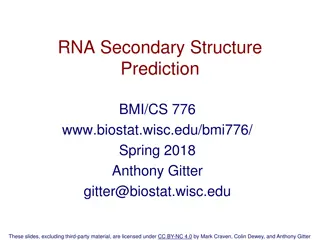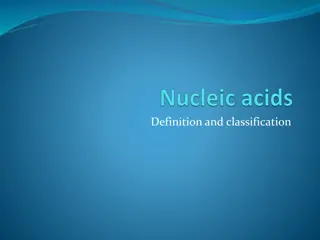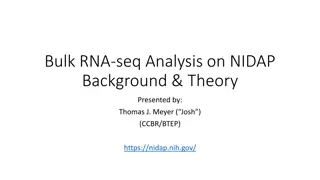Utilizing RNA Sequencing: LINE-1 Transcription in Dogs
Investigating LINE-1 transcription in dogs using RNA-sequencing to locate LINE-1s, analyze different LINEs in various genomes, find highly active LINE-1s, and confirm findings through RT-PCR clones and long-read RNA sequencing. Methods include detecting intact LINEs in genome assemblies and exploring LINE-1 locations in the canFam4 genome assembly. Additionally, discussing open LINE-1s by genome assembly errors and introducing L1EM (LINE-1 Expectation Maximization) to determine approximate reads mapping to each LINE-1 locus.
Download Presentation

Please find below an Image/Link to download the presentation.
The content on the website is provided AS IS for your information and personal use only. It may not be sold, licensed, or shared on other websites without obtaining consent from the author.If you encounter any issues during the download, it is possible that the publisher has removed the file from their server.
You are allowed to download the files provided on this website for personal or commercial use, subject to the condition that they are used lawfully. All files are the property of their respective owners.
The content on the website is provided AS IS for your information and personal use only. It may not be sold, licensed, or shared on other websites without obtaining consent from the author.
E N D
Presentation Transcript
Using RNA-sequencing to determine LINE-1 transcription in dogs Matthew Kramer Mentor: Danika Bannasch Co-Authors: Julia Vo, Daniel York, Robert Rebhun
What is LINE-1? Mendez-Dorantes & Burns 2023. doi: 10.1101/gad.351051.123 Retrotransposon that copy/pastes itself 20% of human genome 18% of dog genome Involved in many diseases: Cancers Cardiovascular disease Alzheimer s
Project Goals 1. Locate LINE-1s within the genome 1. Different LINEs in different genomes 2. Use short-read RNA seq data to find hot or highly active LINE-1s 3. Confirm using: 1. Previously sequenced RT-PCR clones 2. long-read RNA seq
Detecting intact LINEs in genome assemblies RepeatMasker Command line tool Gives genomic coordinates of all LINEs BioStrings R package Extract genomic sequence based on coordinates ORFik R package Detect open reading frames (ORFs)
canFam4 (German Shepherd) 6kb+ LINE-1 Locations + Total n=3090
Open/Open LINE-1s by Genome Assembly 600 500 400 300 200 100 0
Open/Open 6k+ LINE-1s by Assembly Assembly Errors? Lab Bernese Mountain Dog Lab Cairn Terrier Bernese Mountain Dog Basenji Lab Lab Boxer Great Dane Boxer Basenji German Shep German Shep Wolf 0% 10% 20% 30% 40% 50% 60% 70% 80% 90% 100%
L1EM (LINE-1 Expectation Maximization) What is it? Determines approximate reads that map to each LINE-1 locus Assigns reads to multiple loci using expectation maximization algorithm Inputs Repeat Masker (to determine loci) Bwa (aligning software) Assembly (canFam4 used since most LINEs in a dog) Output Read counts by loci Split by predicted type 10% 30% 60%
L1EM results LINE Loci with >100 reads in any sample
L1EM results Tree of LINE-1 Sequences from RT-PCR Clones
Conclusions Different breeds contain different sets of LINEs Potentially affects disease risk Short-read RNA sequencing shows promise for identifying hot LINEs Many databases for short-read data exist
Future steps Analyze long-read RNA-seq data from same samples Compare normal vs. cancerous tissue in same organs (ex. brain) Investigate structure of most active LINEs Does it proper encode for both proteins? How does 5 UTR look?
Acknowledgements Bannasch Lab Dr. Danika Bannasch Julia Vo Cyprien Robart Dr. Lucie Chevallier Collaborators Dr. Daniel York Dr. Robert Rebhun STAR Program NIH T32 Comparative Oncology (T32CA251007) Lodric Maddox Endowed Fellowship
Matt 5 9 The Audience 50/50 Ask question Ponder Life Sit Silently End Meeting Any questions?
Citations Mendez-Dorantes C, Burns KH. LINE-1 retrotransposition and its deregulation in cancers: implications for therapeutic opportunities. Genes Dev. 2023 Dec 26;37(21-24):948-967. doi: 10.1101/gad.351051.123. PMID: 38092519; PMCID: PMC10760644.
